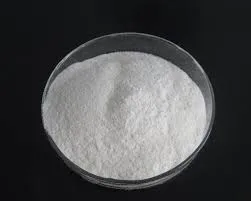
Dec . 10, 2024 23:51 Back to list
Exploring the Applications and Benefits of Hydroxyalkyl Cellulose in Various Industries
Hydroxyalkyl Cellulose A Versatile Polymer in Modern Applications
Hydroxyalkyl cellulose (HAC) is a significant non-ionic cellulose derivative, primarily featuring hydroxyalkyl groups such as hydroxyethyl or hydroxypropyl groups. This innovative material emerges through the alkaline treatment of cellulose, leading to the substitution of hydroxyl groups in the cellulose chains. The resulting polymer brings a unique combination of properties that enhance its utility across various industries, including pharmaceuticals, cosmetics, food, and more.
One of the most remarkable characteristics of hydroxyalkyl cellulose is its solubility in water, which varies depending on the degree of substitution and the molecular weight. This property not only enhances its applicability but also enables it to function effectively in cold and hot water. Its aqueous solutions are typically clear and viscous, making HAC an ideal thickening agent in many formulations. The ability to modify viscosity further allows formulators to achieve desired textural and rheological attributes in their products.
In the pharmaceutical realm, hydroxyalkyl cellulose plays a vital role as a binder, thickener, and stabilizer in various drug formulations. Its use in controlled-release formulations is particularly noteworthy. By adjusting the hydroxyalkyl substitution and molecular weight, researchers can fine-tune the release profile of active pharmaceutical ingredients (APIs). This capability is crucial for improving patient compliance and ensuring therapeutic efficacy over extended periods.
Moreover, hydroxyalkyl cellulose's film-forming properties lend themselves to numerous applications, particularly in topical drug delivery systems. Formulations containing HAC can create a protective film on the skin, enhancing drug penetration and stability while providing moisture retention. This film-forming ability also finds utility in cosmetics, where HAC serves as a key ingredient in moisturizers, lotions, and creams. Its ability to retain moisture makes it an essential component in products designed for dry or sensitive skin.
hydroxyalkyl cellulose

In the food industry, hydroxyalkyl cellulose is recognized for its emulsifying and stabilizing capabilities
. It assists in creating stable emulsions, preventing separation in products such as dressings and sauces. HAC can also improve the texture of food products, enhancing mouthfeel and consumer acceptability. Additionally, its role as a thickening agent contributes to the viscosity required in various culinary applications, ensuring consistency and quality in food products.Beyond pharmaceuticals and food, hydroxyalkyl cellulose is utilized in the construction industry as well. It is incorporated into cement-based products to improve workability, reduce water absorption, and enhance adhesion. In this context, HAC contributes to the development of high-performance building materials, leading to more efficient construction processes and durable structures.
Another exciting area of innovation is the use of hydroxyalkyl cellulose in 3D printing. As additive manufacturing evolves, polymers like HAC provide advantageous properties that enhance the printability and finish of 3D-printed items. Its ability to create a smooth surface and its compatibility with various materials highlight its potential in advancing manufacturing technologies.
Despite its extensive applications, the development and handling of hydroxyalkyl cellulose must comply with safety and regulatory standards. It is deemed safe for use in food and pharmaceutical products, with guidelines established by organizations such as the FDA and the European Food Safety Authority (EFSA). Continuous research and development are focusing on optimizing HAC properties, enhancing its performance across applications while adhering to safety regulations.
In conclusion, hydroxyalkyl cellulose stands out as a versatile polymer with a wide array of applications in pharmaceuticals, cosmetics, food, construction, and 3D printing. Its unique properties such as water solubility, thickening ability, and film-forming potential make it an invaluable ingredient in modern formulations. As industries continue to evolve, the demand for functional and safe additives like hydroxyalkyl cellulose is likely to grow, driving further innovation and research in this dynamic field. Whether enhancing drug delivery, improving food consistency, or advancing construction materials, hydroxyalkyl cellulose remains at the forefront of contemporary polymer science.
-
Versatile Hpmc Uses in Different Industries
NewsJun.19,2025
-
Redispersible Powder's Role in Enhancing Durability of Construction Products
NewsJun.19,2025
-
Hydroxyethyl Cellulose Applications Driving Green Industrial Processes
NewsJun.19,2025
-
Exploring Different Redispersible Polymer Powder
NewsJun.19,2025
-
Choosing the Right Mortar Bonding Agent
NewsJun.19,2025
-
Applications and Significance of China Hpmc in Modern Industries
NewsJun.19,2025







